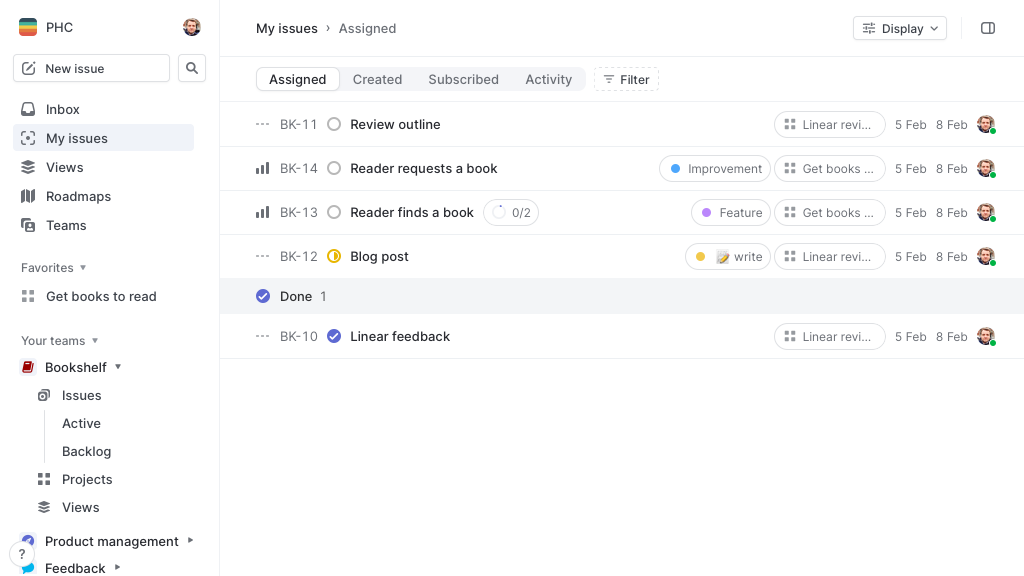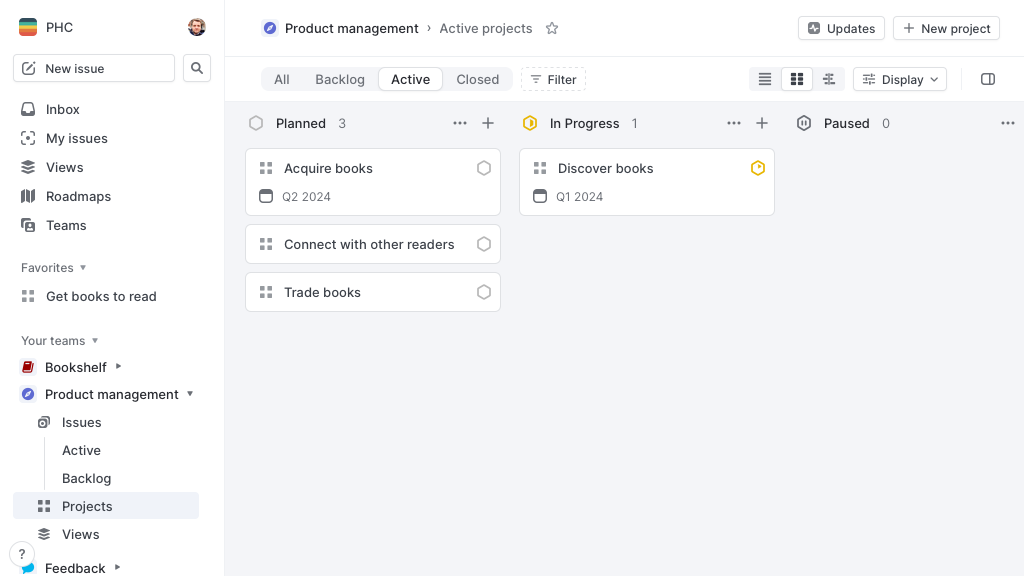Linear teams and projects
Bridging project management tools and product management 2024-02-20 #product #design

- Tana daily pages
- Linear projects ←
Jira has become the definitive software project management tool during the last twenty years. It organises and visualises development teams’ projects and tasks, and embraced agile project management, and Scrum teams.
Software development methods have now moved on, and project management has given way to product management in many teams, and in software startups in particular. Project management tools’ rigidity causes friction for these teams.
Modern tooling
Linear (screenshot) offers a modern alternative to Jira. Linear superficially resembles Jira, organising issues with hyphen-separated alphanumeric identifiers like BK-11, into lists and boards. However, when you actually use Linear, you discover a new quality focus:
- simplicity - no need to employ full-time ‘administrators’ for configuration
- performance - snappy user interface and fast navigation transitions
- usability - e.g. extensive keyboard control for expert users.
It turns out that Linear also supports flexible product development better than legacy project management tools.
Stable projects
I started software development in an environment without stable teams: a consultancy that formed teams to start projects, and disbanded teams when projects (customer contracts) ended. In this context, projects provide the top-level organisation, just like a Jira project:
A project is simply a collection of issues (stories, bugs, tasks, etc). You would typically use a project to represent the development work for a product, project, or service in Jira Software.
Organisations that prefer the benefits of stable teams, who work on a series of projects, don’t align with this model.
Stable teams
Linear organises work around teams:
Teams typically represent groups of people who work together frequently, though in some cases you may choose to structure teams as parts of a product.
Like Jira projects, Linear teams have members and no end date. Equivalently, Jira issues belong to projects, while Linear issues belong to teams.
Differences between ‘projects’ and ‘teams’ don’t really matter, and the word issue quickly loses its regular English meaning (as a synonym of problem). Once you’ve used a tool like this for long enough, the terms only mean what they mean in the tool. However, this does mean that in Linear, project can mean something else.
Short-lived projects
I was initially surprised to see Linear using projects to manage work, given its initial focus on product start-ups, In project management, success means delivering on-time and within budget (typically for a single customer), while product management defines success in terms of solving (multiple) customers’ problems.
It turns out that Linear projects typically manage smaller chunks of work than the kind that needs a project manager:
Projects group issues towards a specific, time-bound deliverable, like launching a new feature.
This more closely matches product delivery work on short- and medium-term goals, with the only difference that product managers might call them initiatives, features or objectives. And unlike Jira epics, Linear projects can span multiple cross-functional teams.
This means you can build a problem-based roadmap from multiple teams’ projects, and use them for planning. This gets you close to a now/next/later roadmap.
Flexible product delivery
Linear offers a smooth migration path from Jira, both for your data, and conceptually. Despite this, Linear works more like other modern product management tools, such as Kitemaker than a project management tool. And with these new tools, teams have fewer excuses for not exploring new product development methods.





